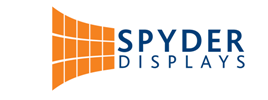If you are designing a single banner, or a large tradeshow backdrop for your exhibition, these handy tips will help you achieve a great outcome.
Use Vector Resources where available
Not only do vector images scale up or down perfectly, they also have a much smaller file size which reduces the slowdown on your computer. Anyone who’s ever worked on a several hundred megabyte Photoshop file knows how painful that can be. Plus, it won’t take forever to spool to the printer when your printer tries to print it.
Work At a Smaller Scale
It can get a little ridiculous trying to design a 6 metre banner to scale at 300 dpi, and most applications have limits to the maximum canvas sizes(Illustrator’s max size is 227.5 inches and InDesign’s is 216 inches). It’s very helpful to work at ¼ scale and have the printer scale it up. If you need to use raster images in your designs, calculate the necessary working resolution based on the full sized design and link to them externally instead of embedding them. Be sure to inform your printer, too.
Stick To Process Colours
Sure the company logo is a specific spot colour, but most large format printers are typically ink jets. Plan accordingly.
Is Your Font Readable?
Most large format pieces are designed to be viewed from a distance. Be sure to use large text sizes that are very easy to read. Try to stay away from really fancy fonts with details that will blend into your design and may fall apart when printing. You’ll also want to consider the contrast and how busy your design is so that your type doesn’t get lost in your creative.
Stand Back From Your Monitor
Stand about 3 metres away from your monitor and see if your design still looks and works great when viewed from a distance. As designers we tend to focus on the details but in a large design piece nobody is going to see the minutia from far away.
Check for mistakes – Print a scaled proof first!
You generally only get one shot at printing a large format piece. Printing a smaller scaled version on an 11×17 or equivalent will help you to catch printing errors, misalignment or other issues before you send it off to the printer.
